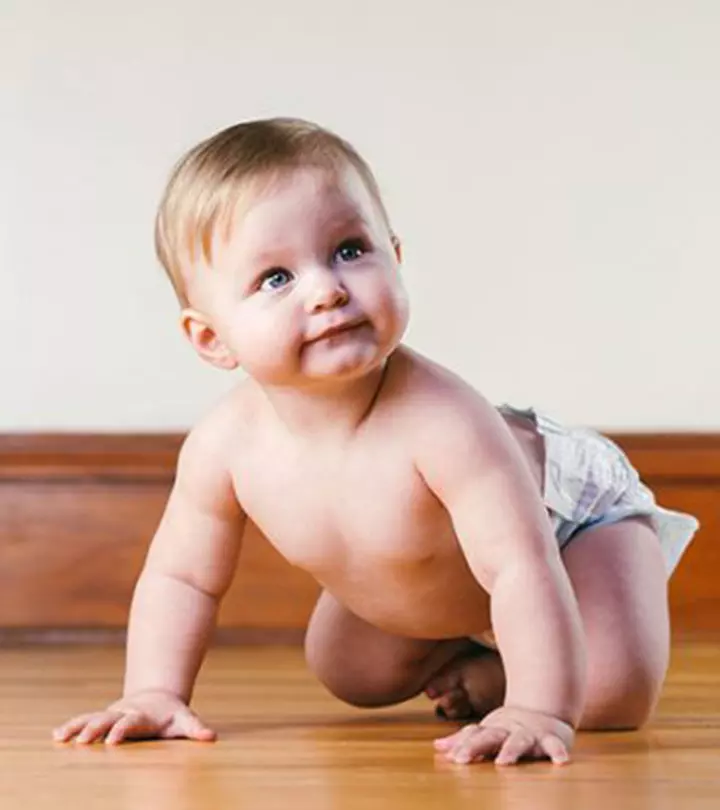

If you have a pup at home, and your baby as well, you would know how early your pup begins to walk, unlike your baby who takes longer. A puppy starts walking between 21 and 28 days, which is way sooner than a human baby can. Now consider a colt, which can begin walking within an hour after birth! It’s interesting how other primate babies are agiler than human babies. So what is it about us humans that we take forever to learn to walk in comparison to these evolutionary relatives, given that humans are probably the highest evolved creatures?
A study by a team of scientists from Lund University and Kristianstad University in Sweden was published in the journal Proceedings of the National Academy of Sciences. The team had created a model to explain why human babies took longer to walk. The model could foretell the onset of the first steps with information on the weight of the animal’s brain indicating the brain development time, and whether the species could stand on its heels touching the ground (as in the case of humans) or on its tips (like horses for instance). It turned out that the neuronal mechanisms involved in the onset of walking were similar in different animals. They, however, are activated at more or less the same time during brain development.
For instance, while a human baby might not walk under its first birthday, an elephant shrew can begin to walk when it’s just a day old, and both of them reach the milestone of brain development at the same time.
Researcher Martin Garwicz and his colleagues from Lund University studied the relationship between various factors such as the size of the brain, the biomechanics of limbs, and the onset of walking for 24 mammal species which included guinea pigs, hippos, camels, sheep, and chimpanzees. They studied these species by recording the time since conception, which meant that for humans it would add about nine months to this walking clock.
They noticed a pattern that spans over the time of conception through the period of brain development outside the womb. They also figured that the hind limbs in a normal stance are more complex biomechanically than the kind of stance, take for example, the horses assume. They do not place their heels on the ground. This biomechanical complexity requires more power to operate, and therefore it entails more time to start moving through early development. Given the fact that human brains grow so much more after birth suggests that it is different from other species.
John Bock, an anthropologist at California State University, Fullerton, attributes the tardiness in learning to walk among human babies largely to immature brains that equip them with little control over their movements. The whole process is a result of a lengthy evolutionary battle between big brains and narrow pelvises.
One thing we must remember is that humans are different from their primate ancestors in assuming an upright gait. Some hypotheses revolve around the evolution of this trait. However, this trait provided a way to move more efficiently in open environments such as the savanna.
It is noteworthy that human ancestors had brains that were more apelike, so their upright gait had caused their pelvis to look much similar to ours. The pelvis has a gained a new shape that makes the birth canal much narrower while also making childbirth more difficult.
The new pastoral grounds provided more advantages and man began to acquire resources and learned to negotiate social relationships and adopt problem-solving behavior. The natural selection also helped increase the brain size in early humans. As time passed nature selected big brains, but narrower pelvis. While there was an evolutionary need for bigger brains against the narrow pelvis, it meant that babies would bigger have while in the womb and would not be able to pass through the birth canal. This would lead to the death of both the mother and the child.
Natural selection had its own way of addressing the problem and helped its best by compressing the babies’ heads as they wriggle their way around the bones in the pelvis. But for a big brain to pass through, there certainly is not enough space.
Natural selection found a solution to this. It allowed the human brains to grow outside the womb before it matures inside it. This meant that in comparison to other mammals, human babies needed quite some brain development after birth. At the time of birth, an infant is born with an underdeveloped brain, which needs a lot of care. They tend to do much less on their own as can the babies of other primates.
What we need to understand is that human brains are learning to walk on two legs while also learning to do many other things at the same time, with one single, still developing large brain.
Community Experiences
Join the conversation and become a part of our nurturing community! Share your stories, experiences, and insights to connect with fellow parents.












